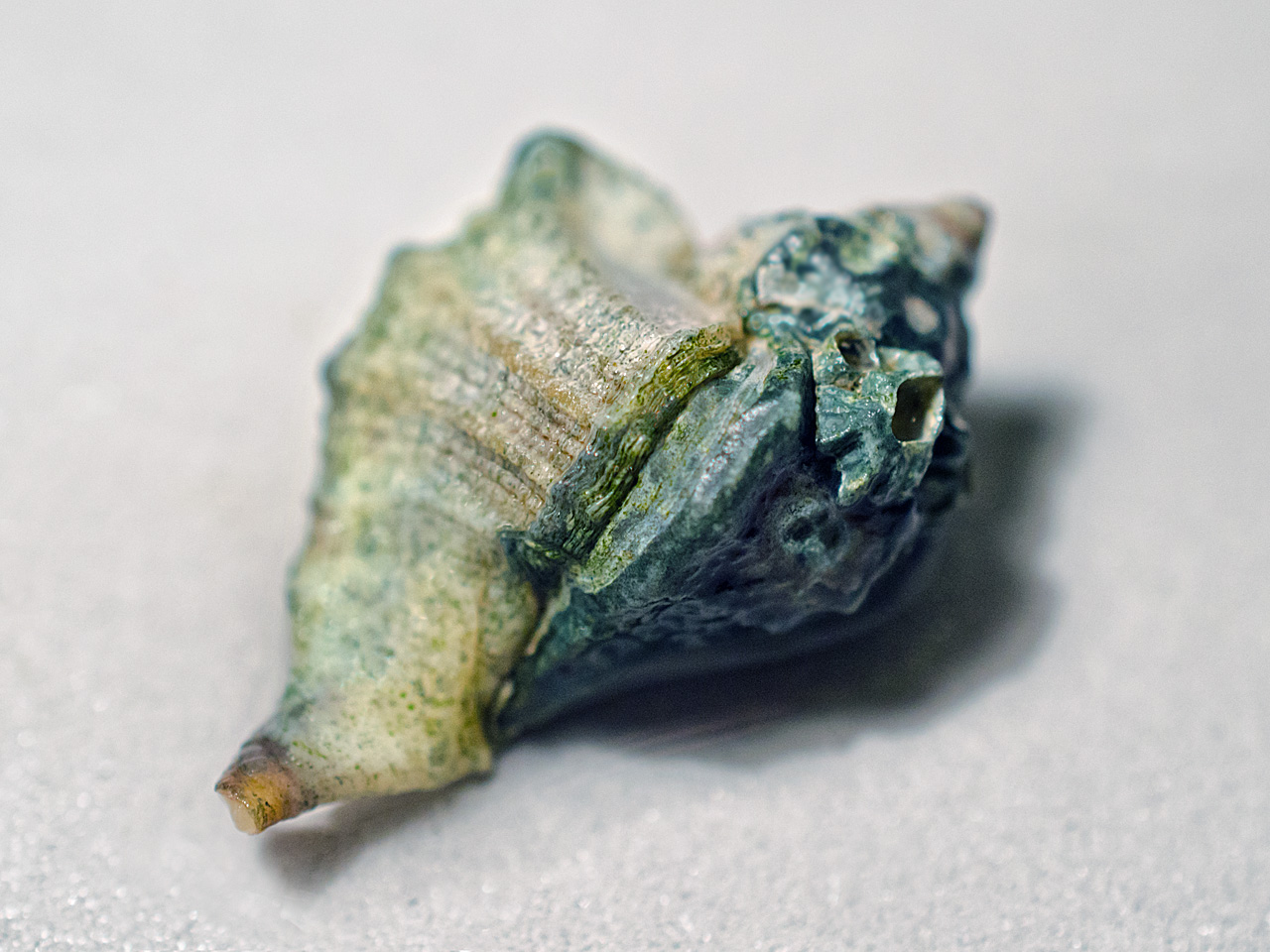I added him to the tank with some trepidation; the whelks and their ilk are usually predators, and sometimes very hungry. I kept an eye on him, and on the possible food sources in the tank; there are a couple of clams, some mussels, always a few barnacles. When I do a thorough cleaning, I comb through the sand. The clams are still there. The mussels are bigger than they were. But the barnacles I've added just a bit ago are now empty shells.
The snail eats barnacles. Nothing else, it seems.
Barnacles are easy to come by, in quantity. He can stay.
 |
| Last August, heading up out of the sand. |
He spends much of his time like this, half-buried in the sand, barely moving. Then for a day or three, he surfaces and goes looking for another barnacle, glues himself to the unfortunate choice, and leaves it gaping open and empty. Back to the sand to sleep it off.
About a month ago, on one of his food runs, I noticed how much he had grown. But the new shell seemed almost to belong to another snail entirely. It was almost white, in sharp contrast to the old slate-grey shell.
 |
| The white is dirty, now, algae-encrusted. But the divide is still there. |
 |
| And the new shell is more ridged than the old section, possibly because the snail isn't being rolled around by fast currents. |
He's a Corded trophon, Trophonopsis orpheus, aka Boreotrophon orpheus, a subtidal resident, rarely seen above the low tide line. I have only seen one before, an infant, newly hatched from the egg case.
 |
| Baby trophon, April, 2012. A few millimetres long. New, sharp sculpturing. |
It looks like the dark grey colouring came from the shore where the snail was living, or from his diet. (Black barnacles?)
These snails are distinctive for their long siphonal canal, the tube that protects the siphon through which the snail "breathes" and finds prey. A good idea; the siphon is the most vulnerable part of this type of snail, sticking out well in front, soft and inviting.
 |
| Little Nassa, leading the way with her small, unprotected siphon. |
 |
| Trophon bottom, showing the siphonal canal. The opening and exit are just visible. |
 |
| Flipping back the operculum (that reddish lid) to extend the foot. |
 |
| Spotted orange and white skin of the foot. The siphon canal extends to the right, the direction of travel. |
Muricid (whelks and their ilk - rock snails) shells are variably shaped, generally with a raised spire and strong sculpture with spiral ridges and often axial varices . . .
Many muricids have episodic growth, which means their shells grow in spurts, remaining the same size for a while (during which time the varix develops) before rapidly growing to the next size stage. The result is the series of above mentioned varices on each whorl. (From Wikipedia)
The ridges, in the photo above, go top to bottom; the varices (sing. varix) go left to right. The shell building continues; it has turned the corner and started on the next lap, which will be bigger than the one just added. The raised lip where the shell turns is a varix.
The snail had been sitting on the pump for a couple of days, so I brought him out for a photoshoot. He didn't seem to mind sitting on plastic foam, and started to roam. I waited, hoping for him to extend the siphon, but there was no sign of it, probably because he was out of water. He's back in the tank now, and has buried himself again, without eating the last two barnacles I've brought him. Sulking, probably.
*Most snails are hermaphrodites, but these ones have separate sexes. I don't like calling a conscious critter an "it", so I've opted for calling this guy a male.

So cool! I learned a lot from this post. Among other things, I had no idea there were non-hermaphroditic snails.
ReplyDeleteI so enjoy your blog, it's a highlight of my morning (even the short posts, though these long ones are my favorites).
Thanks, Sara. I started to write that, then suddenly had doubts, so I went to confirm it on a variety of sites. (I never believe the first one I see.) I think I'll go back and add a link to the Wikipedia page.
ReplyDelete